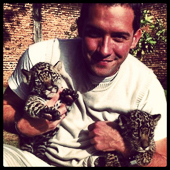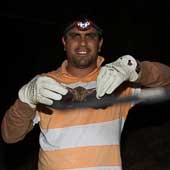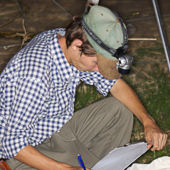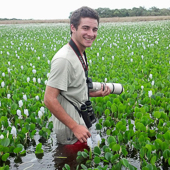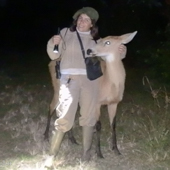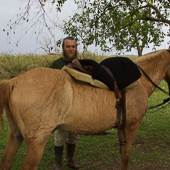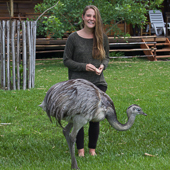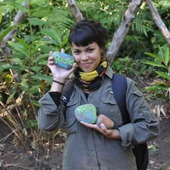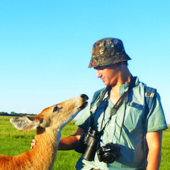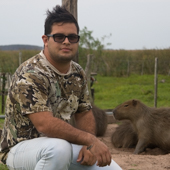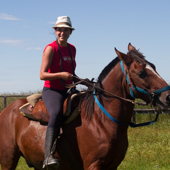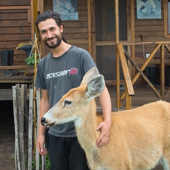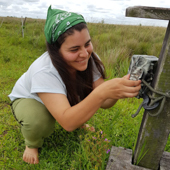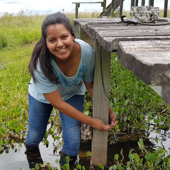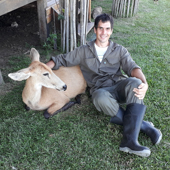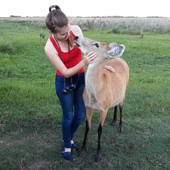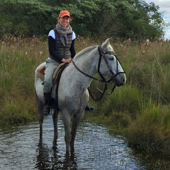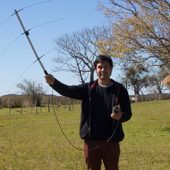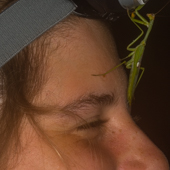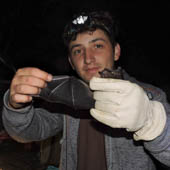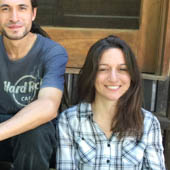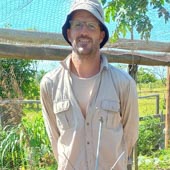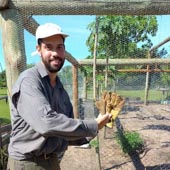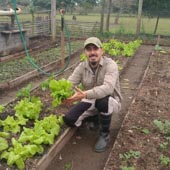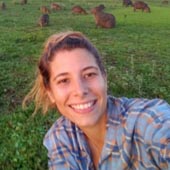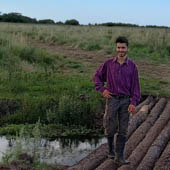
Strange Tails
We're delighted to have a strong population of strange-tailed tyrants at the reserve. So much so that we've adopted these beautiful and endangered birds as the symbol of the Trust
The growing diversity of the animals of Reserva Don Luis is a fresh source of delight every time we return. We don't play favourites, but it's impossible not to engage more with some of our more conspicuous guests. One of these is the strange-tailed tyrant. The male is stoic in his tolerance of one of nature's strangest - and it would seem least practical - adaptations. He's willing to suffer to be beautiful, and somehow manages to fly with tail feathers that were surely designed for a bird three times his size.
We love his perseverance; his resolution to succeed against challenge, and his ability to prove that anything is possible. He's appearing in growing numbers on the Reserva Do Luis, and his success has become an allegory for, and a symbol of, our own.
When we started the process of updating and redesigning our website, we wanted to adopt an image that symbolised our aims and our challenges. This brave little flycatcher, with his indomitable character, was the perfect choice.
The logo is a stylised profile of a male tyrant, silhouetted against the sunrise. We coloured the sun the blue of the Argentinian flag in honour of this country's beauty, its climate and the breathtaking span of magnificent animals that it nurtures.

Bat Research
Our bat team is conducting bat research both in the Ibera Marshes and in other provinces. We are especially concentrating on Misiones at the moment where we find the largest bat in Argentina, Chrotopterus auriitus and Myotis ruber, two species that we are researching.
DONATIONS
Thank you so much for your generous donations to help us with fighting the wildfires last year. We could not have managed without you.
The drought continued this year but fortunately the wildfires did not reach the reserve (although they came very close). As a result of the more than 3 years of drought, the areas of marshland (esteros) started to disappear, and cattle from our neighbours managed to get into the reserve quite easily through previously inaccessible areas. We are in the process of replacing 2 km of fencing in the north partly due to the aforementioned reason and partly due to last year's wildfires. This has been interrupted due to the recent high rainfall. We are now very much a wetland again and no longer are able to drive around the reserve. We are back to using horses to get around. We are all very happy about this but of course there are now problems with access using the 32km of sand road from Ruta 12. The bridges are all in a very fragile state and the local municipilidad does not have the resources to repair the road. After heavy rains, our team has to go out and put temporary repairs to the bridges in place.
As usual we are short of money and would very much welcome any donations.
Are you able to help?
Help Required
- Study of the breeding habits of Alectrurus risora including monitoring of their nests. Due to covid, this project has been delayed, but we are ready to get goung again in the spring. We plan to ring the juveniles in the nest with coloured rings and also do some mist-netting of the adults.
- Continue with our successful bat research at the reserve, in the rest of Corrientes and in Misiones or maybe further afield.
If you feel interested in our projects and would like to volunteer please contact us.
Please bear in mind that you will be expected to help out with whatever is needed at the time and that we do have more than our fair share of insects, including mosquitoes and Deer flies. The sun can be very fierce, even in September, and temperatures can be high. We would expect volunteers to stay for 3 weeks minimum. Anti-rabies vaccinations are essential if you wish to handle bats.
Below are some of our recent volunteers: Alex Roberts, Ed Marray, Cassie Horton, Abel Yunis, Sergio Ramirez, Arturo Roselli, Sebastian Navajo, Edith Villordo, James Crees, Alex Buxton, Florencia, Sebastian Santiago, Martin Oporto, Lucila Amato, Martin Rizzo, Melina, Valeria, Fede, Maria, Beatriz Luraschi, Gustavo Casares, Molly Watson, Leo Georgadis, Melisa D'occhio, Victoria Brenn, Ernesto Villa, Ezequiel 'Puma' Lis, Mariano Aimar, Victoria Brennan, Lucas Preliasco.
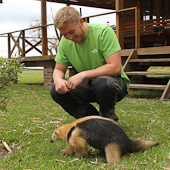
.jpg)
.jpg)
